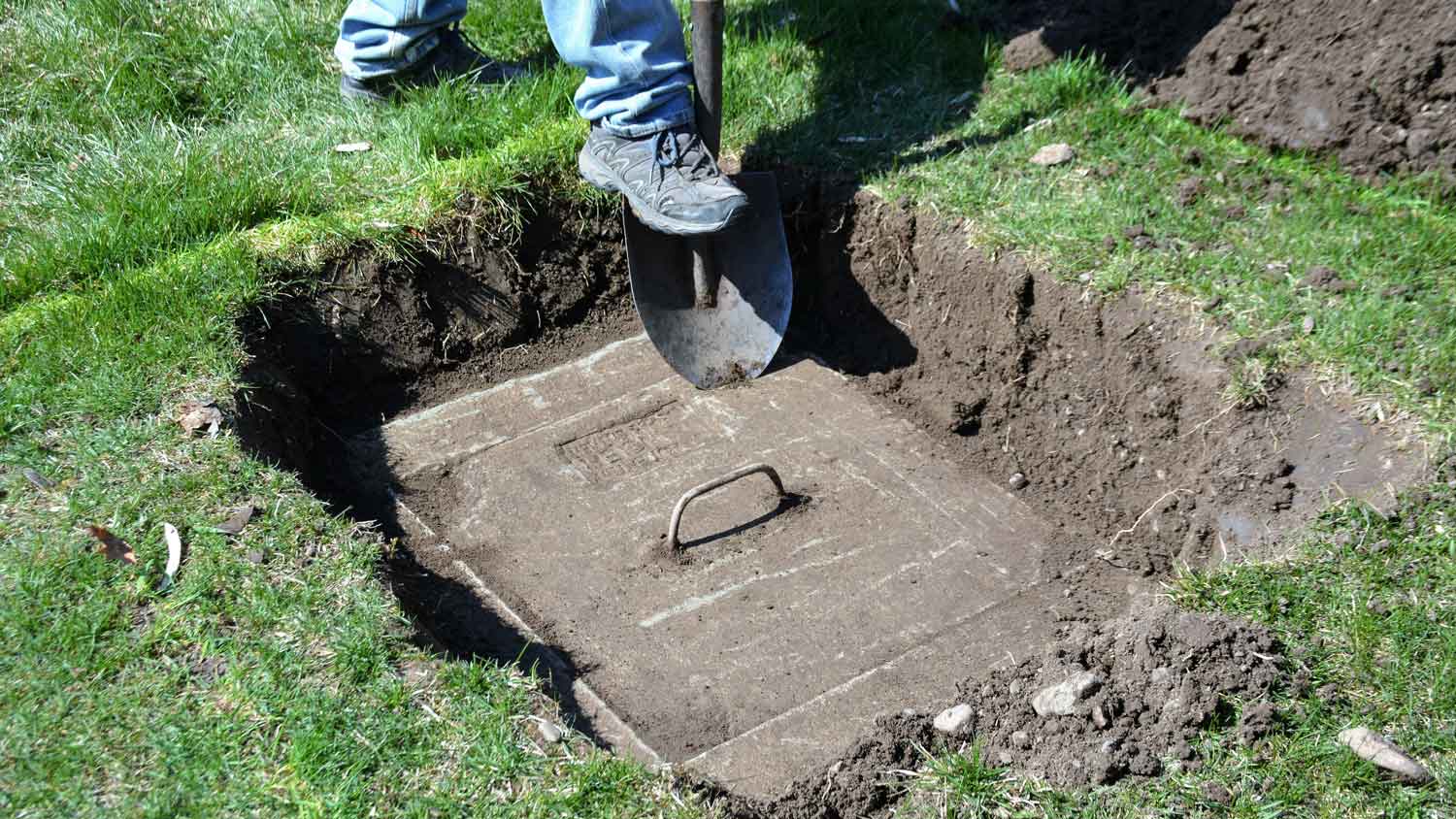
The average cost to connect to a public sewer line in Columbus, OH, depends on the linear footage, piping material, local regulations, and more.
Here are the best ways to locate your septic tank without causing a stink


Poking around for a septic tank can be a time-consuming task for inexperienced homeowners.
A pro can identify issues with your septic tank, preventing damage and health hazards before they become a bigger problem.
A DIY job risks property damage, safety issues, and costly mistakes, such as improper installation or hitting a line.
A pro uses specialized equipment for a non-invasive search, understands local regulations, and knows how to handle the hazardous materials inside the tank.
In an ideal world, you wouldn’t ever have to think about your septic tank or its location on your property. Realistically, though, there are times when you need to know how to find your septic tank—for example, if you’re preparing for septic system maintenance or planning a backyard renovation project. If so, you can follow these simple steps to track down your septic tank (and, if needed, pass the information along to your septic professional or contractor).
Septic tanks are underground for a couple of reasons. For one, these big, bulky tanks aren’t exactly nice to look at—if they were aboveground, they’d be an eyesore. Also, since septic tanks collect and treat wastewater from your home, they’re often pretty smelly.
So, while it’s best for your septic tank to stay buried, it’s still a good idea to understand where it is. Knowing your tank’s location makes it easier to:
Provide maintenance access
Identify septic issues earlier
Prepare to build a new structure or dig in your yard

Before you start searching for your septic tank, it’s helpful to understand where it’s probably not buried. Septic tank professionals will aim to install your tank in a clear patch of yard away from trees, heavy structures, and drinking water sources. For that reason, you can rule out these locations when looking for your septic tank:
Near wells
Close to your home
Near trees or deep-rooted plants
Underneath patios, driveways, or other paved areas
Under sheds, gazebos, pools, or other structures
When you’re ready to start your search, here’s how to locate your septic tank.
Your first step is to review any blueprints, maps, or other paperwork that relates to the layout of your property. Sometimes, these types of documents will include your tank’s location, which is often 5 to 25 feet away from your house.
If you can track down this information, it’s a great starting point to kick off your search. However, these documents are not essential for finding your septic tank, so don’t worry if you can’t find them.
Sometimes, there are obvious signs in your yard that can guide you to the location of your septic tank. For example, you might have a patch of grass that’s super lush and healthy compared to the rest of your lawn. This could come from sewage that leaked out of your septic tank and is now fertilizing your lawn. Or, you might notice an unusual mound or depression in the ground, which can indicate that there’s a septic tank in the area.

Can’t find your septic tank using your property’s map or through visual evidence in your yard? You can find your tank’s approximate location by following your main line, which connects to your septic tank. Here’s how:
Check your basement, garage, or crawl space for a pipe that’s about 4 inches in diameter. It might be made of cast iron or polyvinyl chloride (PVC).
Follow the main line until you see where it leaves your house.
Walk outside to the point where the line exits your home.
Trace the potential path of the pipe in your yard. It should move away from your house in a straight line. Along the way, look for signs of a septic tank, including extra-healthy patches of grass or minor bumps or dips in the ground.
Now, with an idea of where your tank might be, you can use a septic tank locator tool—either a metal detector or soil probe—to confirm its location. Using a metal detector is the easier option, but if you don’t already have one, you can use a soil probe, instead. To do so, gently insert the probe into the ground in the area where you think the tank might be. If you feel any resistance or dig into a hollow section, it could be your tank.
If you still can’t find your septic tank after following these steps, reach out to your local records office. Faulty septic tanks have the potential to pollute nearby water sources and create other environmental problems, so municipalities often require septic installers to get permits before installing a new septic system. If that’s the case in your area, the office may have a map of your septic system on file.

Practicing proper septic tank maintenance is essential to keep your septic system working smoothly and prevent potential problems. Here are some tips to keep in mind:
Schedule a septic tank inspection every two to five years.
Pump your septic tank every three to five years.
Only flush human waste and toilet paper.
Don’t dump food, grease, or chemicals down the drain.
Limit water usage.
Don’t park cars or put heavy objects on top of your drain field.
Ideally, these techniques will help you find your septic tank without a professional’s help. However, if you can’t locate it or don’t want to poke around your yard looking for it, you can call a local septic tank company to do it for you. On average, septic pros charge between $125 and $250 per hour.
Similarly, if you think that your septic system might be malfunctioning, contact a pro as soon as possible. Damaged or leaky septic tanks can release toxic fumes and harm the environment, so it’s best to have an expert handle all septic tank repairs and maintenance.
From average costs to expert advice, get all the answers you need to get your job done.

The average cost to connect to a public sewer line in Columbus, OH, depends on the linear footage, piping material, local regulations, and more.

Need to know what sewer line replacement costs in Charlotte, NC? This guide will help you prepare to budget for sewer line replacement done by local contractors.

Need to know what sewer line replacement costs in Washington, D.C.? This guide will help you prepare to budget for sewer line replacement done by local contractors.

Cleaning out clogged or dirty septic field lines is a quick job for a seasoned pro. Learn what makes up the total cost to clean septic field lines

Got a septic tank? Then you've got a leach field. Knowing where it is helps you maintain your system. Here's how to find a leach field.

Follow this guide to learn how to get rid of a cesspool to save some money and transform your home into a more eco-friendly space.